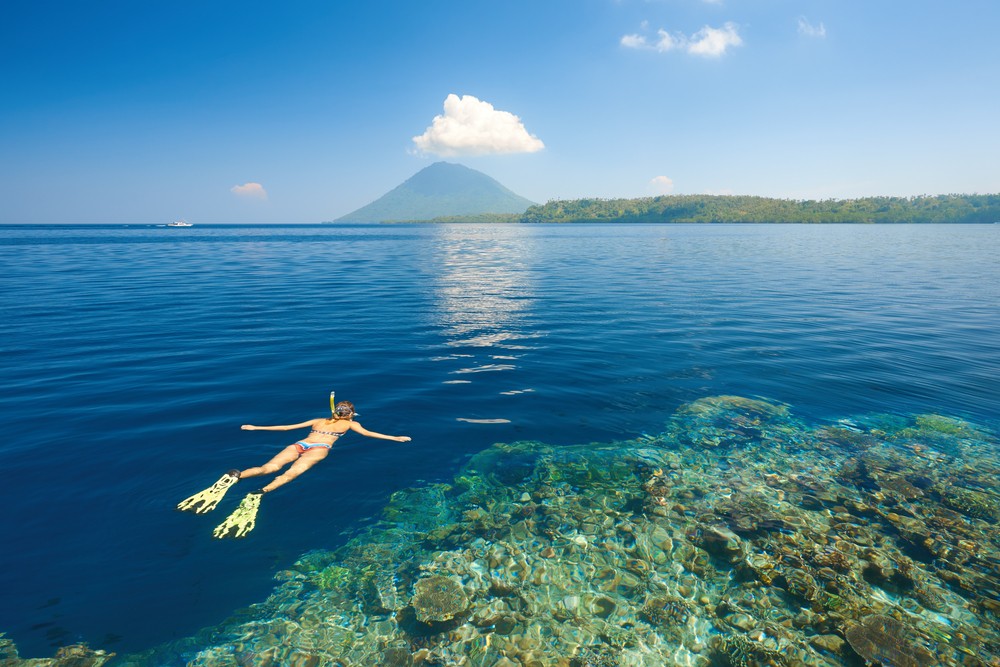Popular Reads
Top Results
Can't find what you're looking for?
View all search resultsPopular Reads
Top Results
Can't find what you're looking for?
View all search resultsEight great reasons to visit North Sulawesi right now
Best visited from March to October, now is the perfect time to pack your bags and discover this true Indonesian highlight.
Change text size
Gift Premium Articles
to Anyone
If you’re looking for a nature-filled vacation this year, North Sulawesi, is the place to go.
The sparkling blue waters host two of the best places to go diving in Indonesia, and there are verdant national parks hosting primates found nowhere else on Earth.
Add to that a handful of top hikes and quiet beaches, and you can see why North Sulawesi is well worth exploring.
Best visited from March to October, now is the perfect time to pack your bags and discover this true Indonesian highlight.
Slow down and sink into the sands at Lembeh’s stunning beaches
Every holiday should start with relaxation time, and where better to slow down than on Lembeh Island.
This forest-covered island has a number of undeveloped beaches to discover; dotted around the coast and disappearing into clear turquoise waters.
Why not take a day or two to stroll the island, sink into the sands and listen to the sounds of nature all around you.
Your soul will thank you for it. Lembeh’s Pantai Kahona is a great place to start.
Explore Lembeh’s lush mangroves
When you’ve had your fill of quiet time on the beaches, take a walk or short boat tour through Lembeh’s lush Ekowisata Mangrove.
These mangroves are vital nurseries for numerous marine life species and support the impressive biodiversity Lembeh’s waters are famed for.
Be sure to look around the mangrove root systems to discover the wealth of wildlife hiding there.
Discover weird and wonderful critters in the vibrant Lembeh Strait
The Lembeh Strait is rightly known as the ‘muck diving capital of the world’ and is not to be missed for a glimpse of bizarre marine life you can only find here.
What is muck diving? It’s a type of diving where you search in rich black volcanic sand to find tiny and strange-looking critters you’ve likely never heard of.
The rewards of searching in the sands are well worth it, as you uncover some of the most sought-after species divers want to see.
Cute-looking pygmy seahorses are tucked in the corals, there are delicate ghost pipefish, whacky-looking frogfish and brightly-colored mantis shrimps.
Mantis shrimps are so powerful, the water around their fists boils when they strike prey.
Read also: Four must-visit destinations in Jayapura, Papua
Most Lembeh dive sites are shallow and the water is clear, making this destination a perfect spot for diving.
Visit in July or August most critters, or October to December for best visibility.
Dive the coral-covered Mawali wreck
While you’re exploring the wonders of the Lembeh Strait, make sure you dive the Mawali wreck.
This Japanese World War II cargo ship lies on her side in 15 to 30 meters of water and is completely covered in soft corals.
At 60 meters long, there is plenty to see along this large wreck, as well as huge lionfish and schools of barramundi in the blue water.
Get your hiking boots on for sunrise at Mount Klabat
Heading back to land, it’s time to put your hiking boots on and explore some of North Sulawesi’s land-based wonders.
Dominating the skyline, Mount Klabat is the highest peak in North Sulawesi and a great place to go hiking or camping.
It’s easy to hire camping gear and guides, plus the trail is in good condition.
Set off in the night and you can summit at sunrise, watching the world turn orange around you.
Meet Tangkoko National Park’s rare (and adorable) tarsiers
Nature fans won’t want to miss Tangkoko National Park. Sitting at the foot of Dua Saudara mountain, the park is bustling with wildlife.
Be sure to pack your binoculars and discover the numerous birds of the park, including Sulawesi’s colourful hornbills.
You’ll also have the chance to see Sulawesi’s endemic crested black macaques, if you visit at night with a guide.
The real highlight of the park, though, is the cuddly-looking tarsier. This small primate is only found in Southeast Asia, and it’s very photogenic.
Looking for paradise? Don’t miss the pristine Bunaken National Marine Park
Take a hop across the water from North Sulawesi to Bunaken and you’ll be visiting one of the most biodiverse areas on Earth and a conservation success story.
Long sought-after by divers and snorkelers alike, the Bunaken National Marine Park is one of North Sulawesi’s true treasures.
It was one of Indonesia’s first marine parks and is so successful that marine parks all over the world model their operations upon it.
Made up of five beautiful islands, the park is best explored by liveaboard diving, allowing you to island-hop and explore some of the numerous dive sites on offer.
There are underwater walls plummeting into the depths, coral-covered pinnacles and more fish than you can imagine.
Fans of turtles are in for a treat as well. This special park is home to five of seven sea turtle species, including the rare green sea turtle.
Be sure to keep your eyes out for dugong as you dive.
Experience Bunaken’s numerous whales and dolphins
The Bunaken National Marine Park is also a great place to go in search of dolphins and whales.
You can join a day boat trip to spot the numerous cetaceans found in the area, including long-nosed spinner dolphins, common dolphins and pilot whales.
If you visit in July or August, you might even see visiting sperm whales. (kes)
***
This article was written by Kathryn, a diver and writer with LiveAboard.com.







